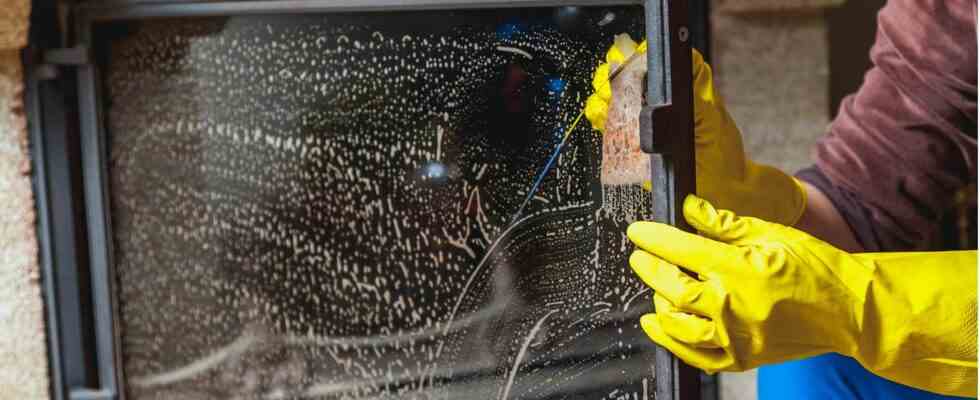soot & dirt
Cleaning the fireplace glass: These tools ensure a clear (transparency) view
Stubborn combustion residues can usually not be removed with ordinary glass cleaners
© glebchik / Getty Images
As beautiful as a blazing fire in the fireplace may be, it still leaves its mark: if black soot settles on the pane, the view of the burning wood is clouded. An ordinary glass cleaner is often not enough to remove the stubborn dirt.
In order not to scratch the fireplace glass, cleaning brushes with hard bristles are an absolute no-go, the same applies to steel wool and scouring pads. But what if the soot deposits can no longer be removed with an ordinary sponge and glass cleaner? In fact, there are a number of practical tips and home remedies that ensure a clear (transparent) view – or special chimney glass cleaners for particularly stubborn dirt. This article explains what these are and when it makes sense to use them.
Clean fireplace glass properly: The best home remedies
- A tried and tested trick for cleaning fireplace glass is to use finer ash. Yes, you read that right: simply use the remains of the burned logs by dampening a clean paper kitchen towel – alternatively an old newspaper – with water and then dabbing it into the (cold!) wood ash. Rub it over the fireplace glass in a circular motion until the soot is removed and then polish the pane with a clean cloth.
Important note: Do not use burnt coal ash as it may contain coarse particles that would scratch the glass. - The combination of vinegar and baking powder should also be suitable for removing soot from a fireplace glass. Mix both home remedies until you get a homogeneous mass. Then apply the viscous paste to the pane and let it take effect for a short time (up to ten minutes depending on how dirty it is). Then clean the glass with a damp sponge and polish the pane with a clean, dry cloth.
- Two other home remedies that can be used to clean fireplace glass are fresh ones Lemons and Black tea. The fruit simply has to be cut into thin slices and rubbed over the glass with light pressure. However, you first boil the tea as usual and then use it as cleaning water.
When a chimney window cleaner makes sense
While light soiling can usually be removed with ordinary household products, heavily sooted windows are rather difficult to clean. Here the use of fireplace glass cleaners be quite useful – either in the form of special sponges, which do not require any chemicals and can therefore be used dry without scratching the glass. Alternatively, there are also liquid cleaning agents for fireplace glass, which are said to be able to remove not only soot but also tar and grease from fireplace and stove glass. how the spray used correctly is stated on the manufacturer’s packaging.
This will prevent heavy soot formation
These preventive measures are helpful to prevent too much soot from settling on the chimney glass in the first place: On the one hand, it is advisable to only burn dry wood – if it is (still) too damp, the temperature in the stove drops and a fire occurs heavy soot formation. On the other hand, the wrong fuel (such as paper or cardboard) is the reason why your fireplace glass turns black faster. Another reason for heavy soiling could also be the wrong air supply: if the wood does not draw enough oxygen, more soot is produced. In this case you should increase the air supply.
Last but not least, logs that are too large can also be to blame for heavy soot formation, as they inhibit the burning process. For this reason, it is advisable to only use medium-sized logs, but not too many either. Arrange these in the fireplace so that there is enough space for the wood to draw enough oxygen.
You might also be interested in:
This article contains so-called affiliate links. Further information are available here.


